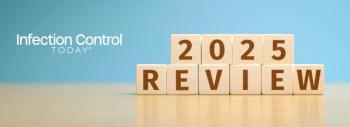
Learn How Communication Shapes Pandemic Preparedness—Health Watch USA 2025
Clear communication is not just important in a pandemic—it’s everything. In a preview of his upcoming Health Watch USA presentation, William Schaffner, MD, shares lessons from COVID-19 on building trust, keeping messages simple, and acknowledging uncertainty.
Communication is the single most important tool in a pandemic. William Schaffner, MD, professor of medicine in the Division of Infectious Diseases at Vanderbilt University School of Medicine, will deliver a keynote presentation on Communications and Pandemic Mitigation Strategies at the upcoming
“Before we had COVID-19,” Schaffner began. “If you had gone to a selection of public health people and ask them if a pandemic were to occur, what are the major issues that you would have to address. The majority of public health authorities would have put communication at the top of the list. And you know what would have been second and third: ‘communication’ and ‘communication.’”
He explained why: “When a pandemic hits, it has to be explained to the public. And then what the public health interventions are, which are going to intervene in people's lives [must be explained as well]. You have to state them clearly, justify them, and provide an explanation for them. We did not do a very good job with those things during COVID-19, and that led to a whole lot of confusion and misunderstanding, some of which we're dealing with still today.”
Schaffner emphasized how messages should have been delivered differently. “I would first of all say we would have to try to explain COVID-19: what's new about it, and then, importantly, as the information about the outbreak evolves, you have to tell people honestly what you know and what it is that you don't know, and you will build on that and perhaps change your mind [and] change recommendations going forward. I don't think we did that clearly [during the COVID-19 pandemic]. The messages have to be clear and simple. You make things complicated, and people get confused.”
Schaffner explained that masks became a flashpoint. “We had a real difficulty with masks because in the beginning, we weren't quite sure how important they were in interrupting transmission. Then we didn't have enough of the high-quality masks available, and so we downplayed the use of masks because we wanted to reserve them for health care personnel. And then we changed our minds and said, ‘Masks are really important. In fact, we want everyone to wear a mask all the time.’ That's very confusing.”
The lack of clarity damaged confidence: “We bollocksed up those lines of communication. And in a sense, that's really an issue that we still struggle with today, trying to get people clear about [masks],” Schaffner told ICT. “[The public] lost confidence, and you still hear, ‘Well, you didn't tell us right about the masks. And so why should we believe you now?’ This restoration of confidence and trust is something that's going to have to take us a long time, I'm afraid.”
Politics further complicated the public health response. Schaffner said, “One of the things that made things difficult during COVID-19, of course, is that things, including vaccine use very prominently, developed a political veneer, and that is killer, because once that happens, that's very difficult [to come back from].”
Schaffner contrasted the COVID-19 response with earlier outbreaks: “Back in 2009, when we had the big swine flu outbreak, all the information came from Atlanta, from the CDC, and that made it more acceptable because that's where the public health authority was. Public health and politics [got] jumbled and mixed up in our response to COVID-19.”
Still, he pointed out successes. “We did many things right. And interestingly enough, the scientists, clinicians, and many public health people did things right. The research was brilliant and intense. Remember when COVID-19 hit, we figuratively opened up our textbooks to COVID-19 and found blank pages. We knew nothing because COVID-19 was completely new. The basic scientists did a huge amount of work describing the virus, how it multiplied, and its immunology. The clinicians did an enormous amount of work establishing the clinical presentations of this very, very serious disease. The public health people caught up and did a very good job in describing how this virus was transmitted, and which groups were at highest risk.”
Looking ahead, Schaffner said his main message at the
Ultimately, he noted, the role of physicians extends beyond clinical care. “We're all in this together—clinicians, public health workers—when we deal either with new epidemics or in conventional infectious diseases and other clinical problems here at the bedside. I like to remind people that the Latin, the Latin root of the word ‘doctor,’ is ‘doper,’ the verb ‘to teach.’ Doctors are teachers.”
Newsletter
Stay prepared and protected with Infection Control Today's newsletter, delivering essential updates, best practices, and expert insights for infection preventionists.




